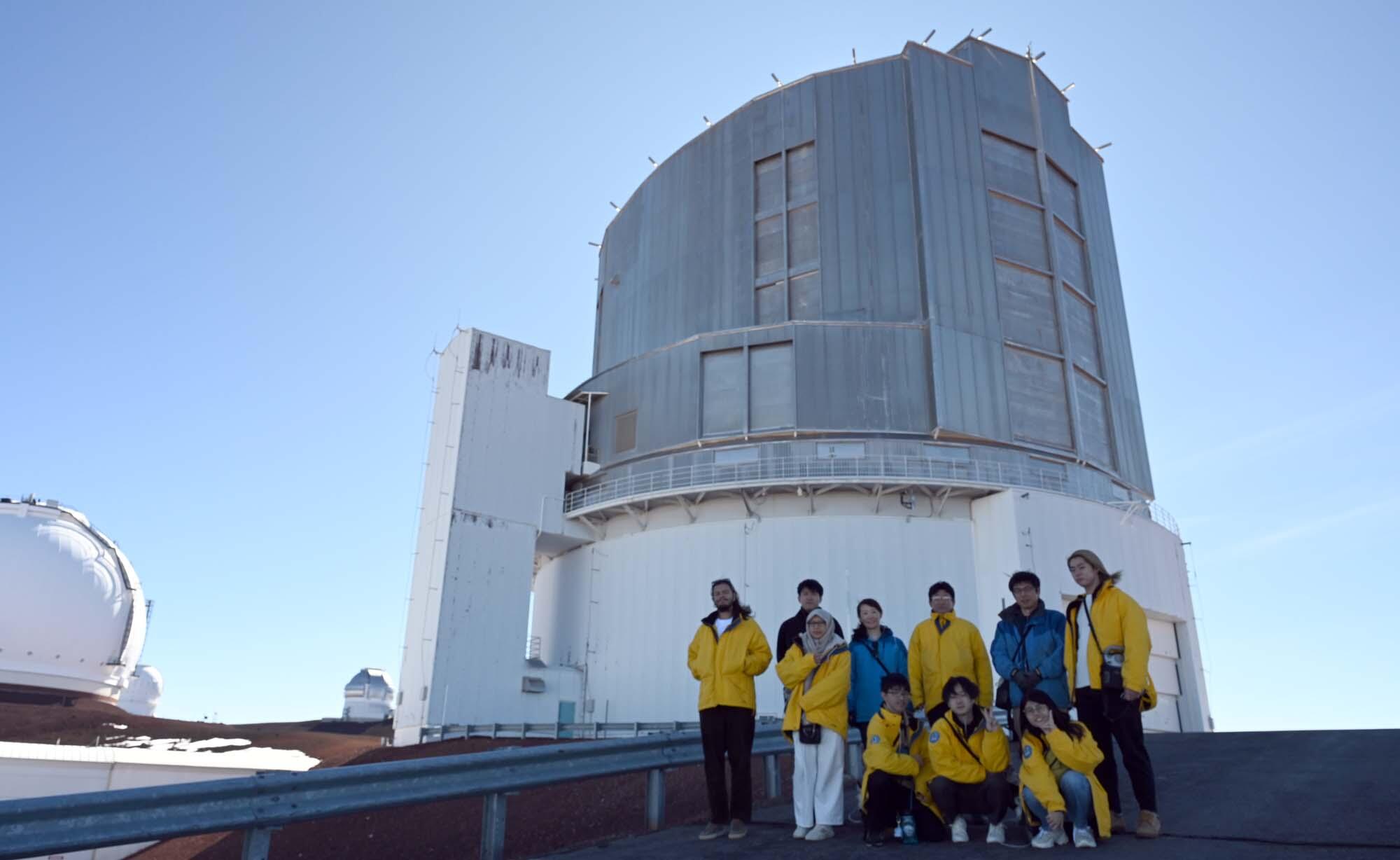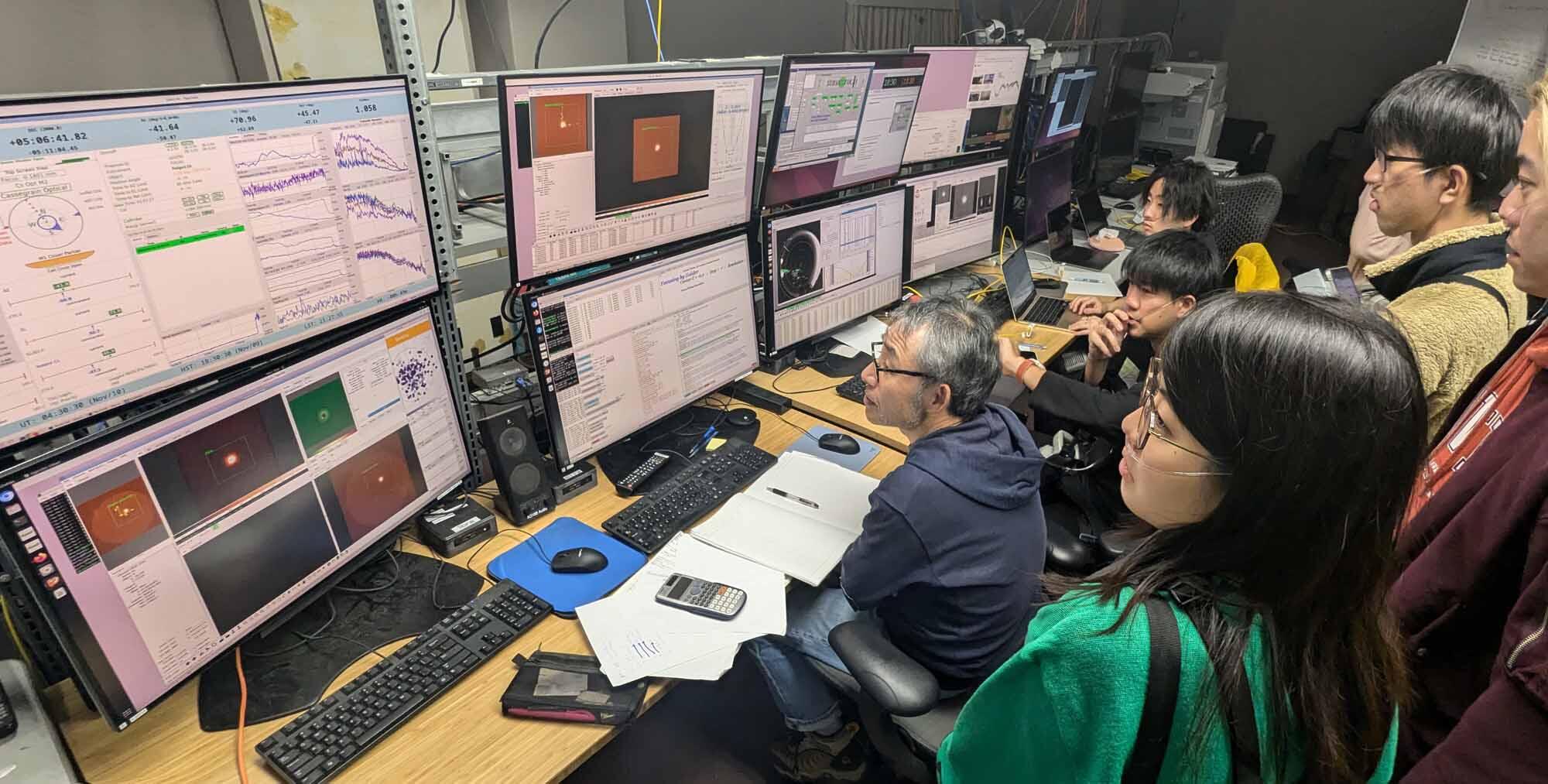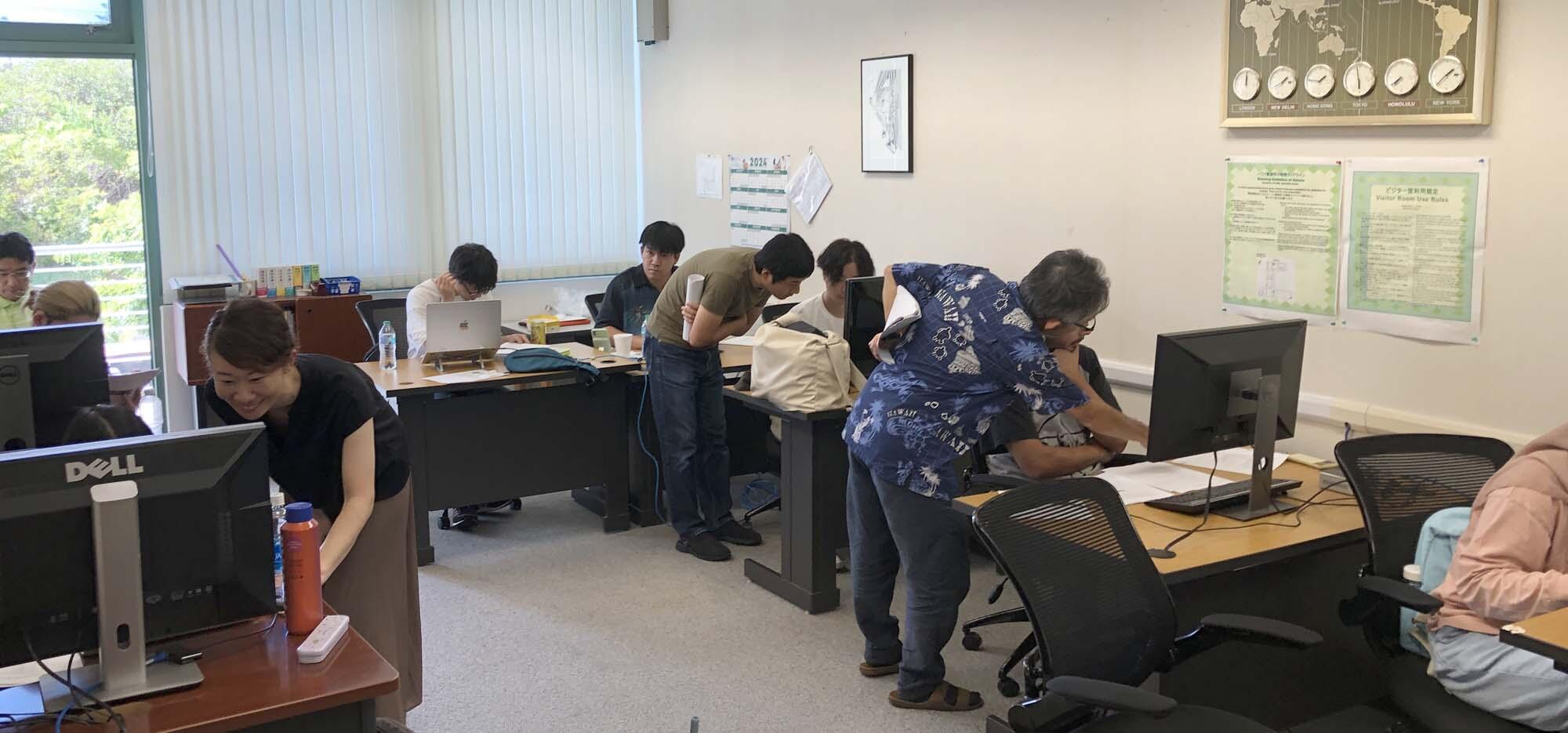Graduate students from the Graduate University for Advanced Studies (SOKENDAI) participated in an observational training class using the Subaru Telescope on the first half of the night of November 9, 2024. With supervision from Subaru Telescope staff, students used the Faint Object Camera and Spectrograph (FOCAS) to conduct two observations that they had proposed themselves. In this article, SOKENDAI faculty at Subaru Telescope report on the training session.

Figure 1: Graduate students and Subaru Telescope staff who supported the training. This year, four second-year students in a five-year doctoral program and three third-year students who had completed their master's programs at other universities attended the program. (Credit: NAOJ)
The Solar System is located within the Milky Way Galaxy, so we must observer the distant Universe through the veil of the stellar halo of the Milky Way. In recent years, numerous small areas of high stellar density, called substructures, have been found in this stellar halo. Many of these are remnants of small galaxies that were accreted into the Milky Way and disrupted in the past. Therefore, these substructures provide important clues for investigating the growth history of the Milky Way. One of the students who participated in the program proposed to use FOCAS to get the spectra of stars in a substructure candidate, which was recently found in the direction of the Andromeda galaxy.
Using the line-of-sight velocity and metallicity derived from the stellar spectrum, we can determine whether these stars belong to the substructure and, if so, how they orbit within the Galactic halo.
FOCAS was also used to conduct observations of extreme emission line galaxy (EELG) candidates, which have extremely strong emission lines associated with explosive star formation activity. These galaxies are thought to be low-mass galaxies, and detailed observation of oxygen and hydrogen emission lines can provide physical quantities such as star formation rate and metallicity, which can help explore the origin of intense star formation in low-mass galaxies. FOCAS is an observational instrument specialized in detecting light from faint celestial bodies and is highly effective for observing such distant galaxies.

Figure 2: In the observation room of the Subaru Telescope, the students assigned roles to each other, such as monitoring the progress of the observation with close attention to weather conditions, checking the acquired data, and so on, and carried out the observations. When the spectrum based on a quick analysis was displayed on the computer screen, everyone looked intently at it. The weather was stable that night, and the observation conditions were excellent, allowing for very high-quality data to be acquired. (Credit: NAOJ)
This observational training program is part of the lecture courses offered in the Astronomical Science Program at the Graduate University of Advanced Science (SOKENDAI). SOKENDAI is composed only of graduate schools, where students study and conduct research at national research institutes. The Astronomical Science Program at SOKENDAI is based at the National Astronomical Observatory of Japan (NAOJ). This observational training program is supervised by Subaru Telescope staff in both Hawai`i and Mitaka Campus in Tokyo, who also serve as faculty members at SOKENDAI. In addition to the observations, students experience the entire process from pre-observation preparations to data processing. This education is an important responsibility for fostering the next generation of researchers. Therefore, Subaru Telescope staff puts much effort into it.

Figure 3: The students working on data analysis at the Hilo Base Facility after the observations, with guidance from Subaru Telescope staff. (Credit: NAOJ)
After completing the program, one of the students says, "It was a very fresh and valuable experience. Through the fun of observation and on-site learning, we were reminded of the importance of conducting research from both theoretical and observational perspectives. We want to make use of this experience in our future research."


